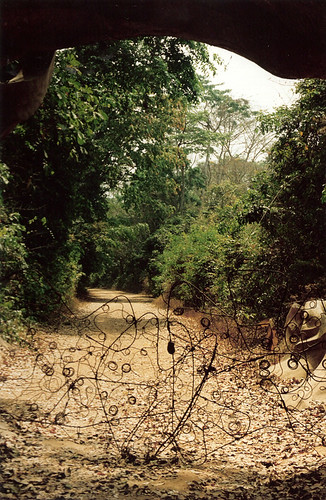Terror of a Different Kind
Tuesday 09 September 2008
by: Nushin Arbabzadah, The Guardian UK

An afghan woman shows the scars that she received after setting herself on fire. She did so in protest to a forced-marriage arrangement. (Photo: AFP / Getty Images)
Across Afghanistan, women are setting fire to themselves. What drives them to this level of desperation?
When Vietnamese monk Thich Quang Duc set fire to himself at a busy intersection in Saigon in 1963, few of the Afghan women who later followed his example were even born. Most of them had probably never heard of the burning Buddhist monk, of the way pictures of his spectacular protest made the then US president, John F Kennedy, famously shriek "Jesus Christ!", or of the way, as some say, his self-immolation speeded up the downfall of the regime against which the monk was protesting.
His death triggered many questions and interpretations. In the words of one commentator at the time: "To set oneself on fire is to prove that what one is saying is of the utmost importance." Thinking of the Afghan women who set light to themselves, just what is this thing of utmost importance that they are trying to say? Since March 2008, there have been a hundred cases of self-immolation in southwestern Afghanistan alone; 100 women who got hold of fuel, soaked themselves in the liquid and lit the match to stage a small-scale domestic revolution of a spectacular nature. If they wanted to say something, they wanted to say it with vehemence. If they wanted to leave this world, they didn't want to leave quietly. But what is their motivation? And who or what is the subject of their protest?
Unlike the burning monk, who wrote down all his hopes, wishes and complaints prior to his death, little is known about what motivates the Afghan women. Few of them survive to tell the tale and those who do survive are unwilling to talk. Afghan documentary film maker Olga Sadat spent months at a hospital which specialises in treating burns. She waited patiently but persistently to win the trust of the women she interviewed for her film Yak, Do, Seh (One, Two, Three). The film is a documentary cautionary tale the aim of which is to discourage self-immolation. In an interview with Germany's Deutsche Welle international radio, Sadat said,
Unfortunately, in the eight months that I was working on the film, only one of the many women who had set themselves on fire and were brought to the hospital managed to survive. But even that woman is in a bad state.
The woman had set fire to herself in protest against maltreatment on the part of her husband.
Sadat told Deutsche Welle that she believes that the women who set themselves on fire are confident that someone will come to their rescue while they are in the process of catching fire. Those she did manage to interview for her film said that when they lit the match, their aim was not suicide. They just wanted the people who maltreated them to take notice of the suffering they had caused.
Forced marriages and maltreatment by husbands and fathers is often cited as the cause of the despair that leads women to use household fuel to set fire to themselves. But a closer look reveals a more complex picture.
Sometimes the protest is directed against other women, such as an unkind mother-in-law. Other times girls have set fire to themselves for the love of a man they could not marry. And then there's protest against institutions, like case of the woman in Laghman, northern Afghanistan, who came to the court hiding petrol under her burqa. She had petitioned for divorce and was awaiting the verdict when she set fire to herself.
Female drug addiction is an equally powerful trigger that has led to self-immolation in places like Ghore, in western Afghanistan. But the fact remains that the women themselves are usually silent on the meaning of their own suicides and the meaning of their acts remains essentially ambiguous.
In a recent statement, the Afghan women's affairs minister said:
As long as all individuals, but especially the families, fail to ensure women's social and human rights, it's impossible for the government or the related offices to have any notable success in reducing violence against women.
Other officials, like Sima Shir Mohammadi, the head of the women's affairs department in Herat, blame the war. They say violence stops government offices and aid agencies from reaching remote areas. That's why cases of self-immolation have fallen in the cities but increased in rural areas.
Earlier, in an interview with an Iranian feminist website, Shir Mohammadi said her department had worked hard to tackle the problem: "We had meetings with religious scholars and asked them to make use of religious texts, Qur'anic verses and the prophet's sayings in their Friday sermons and in radio and television speeches to tell the people in rural areas that suicide is not the solution." The clerics also tell worshippers that maltreatment of girls and women is not allowed in Islam. Both Shir Mohammadi and the women's affairs minister believe that the cooperation of religious scholars is essential in solving this problem. This society is traditional and the people respect the clerics and follow their advice.
Time will tell whether the preachers' message will prove effective and discourage women from resorting to fuel and matches to get their message across. What's certain is that the traditional path of "patience and forbearance" has lost its appeal to Afghan women.
















